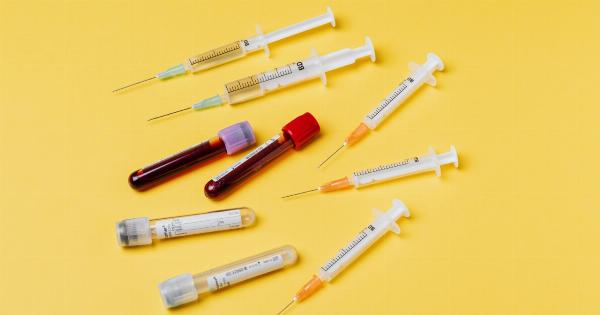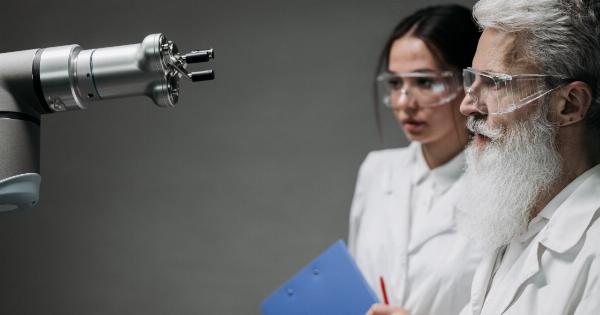In recent years, technological advancements have played a significant role in revolutionizing the healthcare industry. One such innovation is the development of portable medical devices that enable quick and accurate medical exams.
These portable devices have transformed the way healthcare professionals conduct examinations, providing enhanced convenience and efficiency. This article will explore the benefits of using portable medical devices and how they have revolutionized medical exams.
The Need for Quick and Accurate Medical Exams
Traditional medical exams often involve scheduling appointments, waiting times, and multiple visits to healthcare facilities.
These processes can be time-consuming and may lead to delays in diagnosis and treatment, especially for individuals in remote areas with limited access to healthcare services. Rapid and accurate medical exams are crucial for early detection of diseases, prompt diagnoses, and effective treatment plans.
What Are Portable Medical Devices?
Portable medical devices are compact, lightweight, and handheld instruments used by healthcare professionals for various diagnostic tests and data collection.
These devices are designed to be easily carried and used in different healthcare settings, including hospitals, clinics, and even homes, enabling quick medical examinations without the need for extensive equipment or infrastructure.
Benefits of Using Portable Medical Devices
1. Enhanced Accessibility: Portable medical devices have democratized access to medical exams, particularly in underserved areas where healthcare facilities are scarce.
These devices can be easily transported to remote locations, enabling healthcare professionals to reach patients who otherwise would struggle to receive necessary medical attention.
2. Time Efficiency: With portable medical devices, healthcare professionals can conduct exams promptly, reducing waiting times and improving the overall efficiency of healthcare services.
Patients no longer have to wait for extended periods to undergo diagnostic tests or receive medical advice, leading to faster diagnosis and treatment.
3. Cost Savings: Portable medical devices can significantly reduce healthcare costs by eliminating the need for patients to travel long distances for exams or hospital visits.
Additionally, these devices often require minimal maintenance and have lower operational costs compared to larger medical equipment, making healthcare more affordable and sustainable.
4. Real-Time Monitoring: Many portable medical devices are capable of providing real-time monitoring solutions. This allows healthcare professionals to track vital signs, collect data, and make informed decisions promptly.
Real-time monitoring is particularly beneficial in critical care situations, where immediate intervention can be life-saving.
5. Patient Comfort: Traditional medical exams can be unpleasant and anxiety-inducing for some patients. Portable medical devices offer a more comfortable experience by eliminating the need for invasive procedures or uncomfortable positions.
Patients can undergo exams in familiar surroundings, leading to improved patient satisfaction and cooperation.
Applications of Portable Medical Devices
Portable medical devices have a wide range of applications across various medical specialties. Some common uses include:.
1. Point-of-Care Testing
Portable medical devices enable point-of-care testing, allowing for immediate diagnosis and treatment decisions. These devices can perform tests for various conditions such as diabetes, infectious diseases, allergies, and cardiovascular markers.
Point-of-care testing eliminates the need for sending samples to a laboratory, reducing turnaround time and enabling faster intervention.
2. Remote Patient Monitoring
Portable medical devices play a vital role in remote patient monitoring, particularly for individuals with chronic diseases or those recovering from surgery.
Patients can measure their vital signs, such as blood pressure, heart rate, glucose levels, or oxygen saturation, from the comfort of their homes. The collected data can be transmitted wirelessly to healthcare providers, allowing for remote assessment and timely intervention.
3. Telemedicine
With the growing popularity of telemedicine, portable medical devices are essential for virtual consultations.
Healthcare professionals can guide patients to perform exams using these devices, remotely monitoring their condition and providing medical advice. Patients can receive healthcare services without leaving their homes, saving time and effort.
4. Emergency Medical Services
Portable medical devices are indispensable in emergency medical services. Paramedics and first responders can quickly assess a patient’s condition using portable devices to provide immediate and appropriate treatment on-site.
These devices enable critical decisions to be made promptly, potentially saving lives.
Challenges and Future Developments
Although portable medical devices offer numerous advantages, several challenges need to be addressed for broader adoption and improved efficacy. Some of these challenges include:.
1. Regulatory Compliance
Regulatory bodies need to establish guidelines and standards specific to portable medical devices to ensure safety, accuracy, and data privacy. Compliance with these regulations is crucial to build trust among healthcare professionals and patients.
2. Connectivity and Interoperability
For seamless integration into existing healthcare systems, portable medical devices should be compatible with electronic health records (EHRs) and other healthcare platforms.
Establishing universal connectivity standards will enable efficient data exchange and enhance the overall healthcare ecosystem.
3. Data Security and Privacy
As portable medical devices collect sensitive patient data, robust security measures need to be implemented to safeguard privacy and prevent data breaches.
Encryption, authentication, and secure transmission protocols are essential to ensure patient information remains confidential.
Despite these challenges, the future of portable medical devices looks promising. The ongoing advancements in technology will continue to improve device accuracy, usability, and affordability. The integration of artificial intelligence (AI) and machine learning algorithms will further enhance the diagnostic capabilities of portable medical devices, enabling more precise and reliable results.
Conclusion
Portable medical devices have revolutionized the way medical exams are conducted, providing healthcare professionals with quick and accurate diagnostic tools.
These devices enhance accessibility, improve time efficiency, and enable real-time monitoring, benefiting both patients and healthcare providers. With further advancements in technology and addressing current challenges, portable medical devices will play an increasingly significant role in transforming healthcare delivery.





























